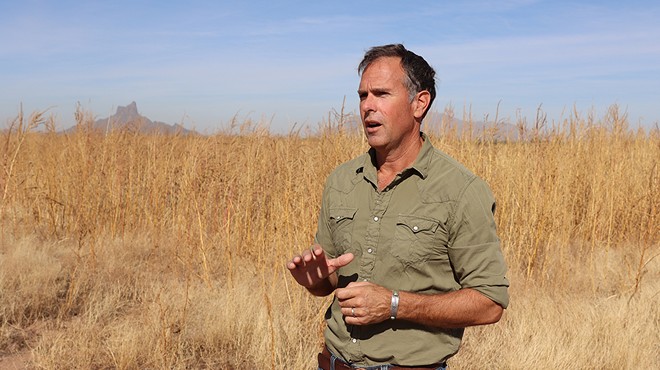Friday, January 1, 2010
Happy New Year From Mars
A few new HiRISE images of Mars from the UA's Lunar and Planetary Lab to start the new year:

- NASA/JPL/University of Arizona

- NASA/JPL/University of Arizona
The upper shot shows dark sand covering bright bedrock in the Terra Meridiani region of Mars.
Nathan Bridges of the LPL tells us:
The MER Opportunity rover is currently exploring Meridiani, but is located about 500 kilometers to the west-southwest from here (as of 2007).There are three broad classes of terrain in this image. The regular spacing of the dark ridges, with one side of the ridges (in this case generally on the northwest) shallower than the other, indicates that the material is windblown sand deposited in the form of dunes or large ripples.
On the slopes of and in between the dunes/ripples are smaller-scale ripples. The dark tone
of the sand and compositional analysis of analogous material by Opportunity indicates a basaltic composition. This is in contrast to most sand on Earth, which is dominated by the mineral quartz.
The basaltic sand here and elsewhere on Mars probably formed from the breakup of volcanic rock via water, wind, impact, volcanic, and maybe other processes. It was then sorted and organized into dunes and ripples by the wind. Two expanses of relatively sand-free terrain are seen in the upper part of the image. The gray material at upper center has a polygonal pattern when viewed at high resolution. The polygons may be fracture (jointing) patterns induced by local stresses in the rock or possibly from desiccation (drying) of the original material that formed the gray unit. This pattern is seen in the hematite-rich rocks at the Opportunity site.
The third terrain is a bright rocky unit at top center of uncertain origin. It is at the base of a cliff, above which is the gray unit. Therefore, the bright material may be older than the gray polygonal unit. Because both units are exposed today, they must have been partially uncovered in the past, with sand recently covering them again in some areas.
The LPL's Candy Hansen tells us this about the lower image:
Most debris on crater walls slides straight downhill. In this HiRISE image we see examples of boulders that have bounced downhill, not necessarily vertically.A prominent example looks like a dotted line from the top of the crater wall where the boulder took off to the crater floor where it finally came to rest.
Numerous boulders have slid partway down toward the crater floor, which is covered by sand dunes. This is actually a small crater (approximately 1 kilometer wide) within an unnamed but much larger approximately 30 kilometer crater.















